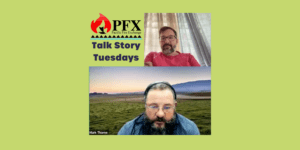The Republic of Palau comprises 250 islands at the western end of the Caroline Islands, approximately 500 miles due east of the Philippines.
Human habitation and Biodiversity
The island group was settled approximately 3,000 years ago and the current population is over 20,000 centered mostly in the city of Koror. Largely renowned for its marine ecosystems, Palau's terrestrial ecosystems are also biologically diverse with high rates of species endemism and relatively large tracts of intact tropical rain forest.


Human-caused Fire, Ecological Effects and Seasonal Influences
Fire-prone savannas, dominated by native ferns, grasses and shrubs, occupy nearly 15% of Babeldaob, the largest island of Palau. As elsewhere in Micronesia, these savannas were created and are maintained by intentional burning and create a complex forest-savanna mosaic landscape. Palau experiences drier conditions annually during March and April, during which fires are most common. Fire frequency and area burned increased dramatically during the severe drought associated with the 1998 El Niño event (2010 SWARS).
Palau Wildfires
The US Forest Service’s Pacific Island Research center’s Julian Dendy has mapped the extent of wildfires from 2012 – 2022.



Recent Resources for the Western Pacific
In this Pacific Fire Exchange talk story Q&A session, we speak with Dr. Clay Trauernicht and Dr. Alyssa Anderson, University of Hawai`i at Mānoa about wildfire in Hawai`i in the context of Hawaiian language newspapers as well as the historical landscape changes of the 20th century.
In this Pacific Fire Exchange talk story Q&A session, we round up the latest research, past and present for managers and landowners wanting to understand more about how our four-legged friends (goats, sheep, cows, etc.) if managed properly can help reduce blazing and wildland fire. This month’s science share out and conversation was with Dr. Clay Trauernicht, University of Hawai`i at Mānoa Ecosystems and Fire Specialist; Raia Olsen of O‘ahu Grazers and Dr. Elliott Parsons, formerly with the Department of Land and Natural Resources. They presented the how-tos on hiring island professional grazers and lessons learned for contract grazing.
In this Pacific Fire Exchange talk story Q&A session, we round up the latest research, past and present for managers and landowners wanting to understand more about how our four-legged friends (goats, sheep, cows, etc.) if managed properly can help reduce blazing and wildland fire. This month’s science share out and conversation will be with University of Hawai‘i’s Dr. Mark Thorne, Specialist, State Range and Livestock Extension and Dr. Clay Trauernicht, Fire and Ecosystems Specialist.



